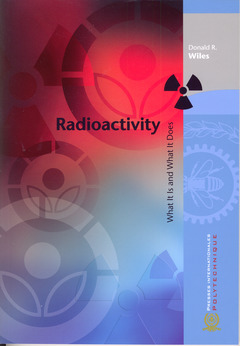A number of good textbooks on radiochemistry have been published for experts and advanced students, but very few are written for the general public and the nonspecialist. Those that exist are mostly written either by opponents of nuclear power or by those invested in the industry. This book takes no stand on the political controversy surrounding nuclear power, the facts are presented with no sermon attached, and anecdotes from the author's vast experience in the field provide a more personal insight into this complex subject. He gives detailed descriptions of several serious nuclear accidents, including that at Chernobyl. While the author's perspective is primarily Canadian, the descriptions and illustrations are relevant for readers in any country. In the final chapter, the author asks the question, "Are we completely safe?" The answer, intriguingly, is "I hope not." Read on to see why.



